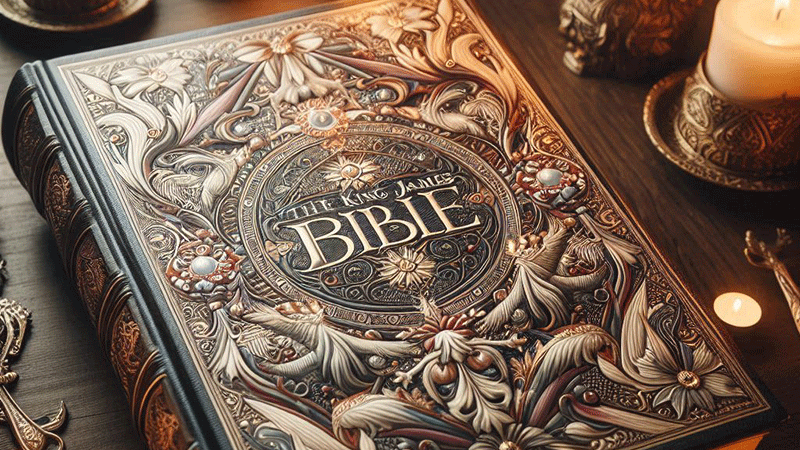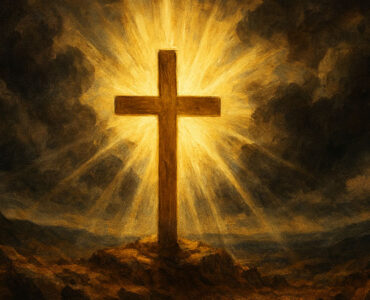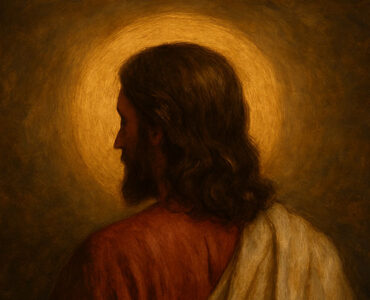Christianity is centered on the Bible, but not all Christian groups use the same version of it. While all branches of Christianity recognize the Holy Scriptures as God’s Word, differences exist in the number of books included, the translations used, and the way certain passages are interpreted. These variations can be seen between Protestant, Catholic, and Orthodox traditions.
So, no, not all branches of Christianity follow the same Bible. The key differences include:
- Canon (the list of books included in the Bible): Some Christian traditions include additional books, known as the Deuterocanonical (or Apocryphal) books.
- Translations and versions: Different groups employ distinct translations, which can impact word choice and interpretation.
- Interpretation and theological emphasis: The way Scripture is understood and applied differs among denominations.
So, understanding these variations is important because:
- It helps Christians appreciate the richness and diversity of their faith traditions.
- It clarifies misconceptions about different Christian groups.
- It highlights the historical and theological reasons behind these differences.

Canonical Differences Across Christian Traditions
The Bible’s canon (the official list of books recognized as Scripture) is not identical in all branches of Christianity. The major divisions include:
- Protestant Bible: Contains 66 books (39 in the Old Testament and 27 in the New Testament). Protestants do not recognize the Deuterocanonical books as Scripture.
- Catholic Bible: Includes 73 books (adding seven additional books in the Old Testament, such as Tobit, Judith, and Maccabees).
- Eastern Orthodox Bible: Contains even more books than the Catholic Bible, with variations depending on the specific Orthodox tradition.
These differences trace back to historical developments, including:
- The Jewish Scriptures (Tanakh) form the basis of the Old Testament.
- The Septuagint (Greek translation of the Hebrew Scriptures) influenced early Christian Bibles.
- The Reformation, where Protestants rejected certain books that were not part of the Hebrew canon.
Historical Background: Formation of the Christian Bible
The formation of the Christian Bible was a gradual process that involved careful selection and recognition of authoritative texts by early Christian leaders.

Formation of Biblical Canons in the Early Christian Era
- The earliest Christians inherited the Hebrew Scriptures (what would become the Old Testament) as their sacred writings.
- Apostolic letters and Gospel accounts were written in the first century AD, providing the foundation for the New Testament.
- By the 2nd century, Christian communities circulated and revered certain texts, distinguishing them from other writings.
- Early church leaders, such as Irenaeus of Lyons (c. 180 AD), emphasized the importance of the four Gospels (Matthew, Mark, Luke, and John) while rejecting others.
- The Muratorian Fragment (c. 170-200 AD) is one of the earliest known lists of New Testament books, confirming widespread acceptance of key writings.
Role of Church Councils in Canon Determination
- The process of defining the biblical canon was not completed in a single moment but involved debates and consensus-building over centuries.
- The Council of Nicaea (325 AD), while primarily focused on Christological issues, reinforced the authority of widely accepted Christian texts.
- The Council of Hippo (393 AD) and the Council of Carthage (397 AD) affirmed the 27 books of the New Testament that Protestants accept today.
- Early theologians such as Athanasius of Alexandria (367 AD) played a key role in listing the books of the New Testament canon in his famous Easter letter.
- The Protestant Reformation (16th century) led to a reevaluation of biblical books, ultimately resulting in the 66-book Protestant Bible, excluding the Apocryphal (Deuterocanonical) books accepted by Catholics.

Key Historical Milestones (Influence of Figures and Events in Shaping the Bible)
- Marcion of Sinope (2nd century AD) attempted to create a canon that excluded the Old Testament, but his views were condemned by early church leaders.
- Origen of Alexandria (3rd century AD) contributed to biblical scholarship, emphasizing the spiritual interpretation of Scripture.
- Jerome (4th century AD) translated the Bible into Latin (the Vulgate), which became the standard Bible for Western Christianity.
- The Protestant Reformation (16th century AD) led to Martin Luther and other reformers removing the Deuterocanonical books from the Old Testament, shaping the Protestant canon.
- The King James Bible (1611) became one of the most influential English translations, solidifying the Protestant understanding of Scripture.
So, the development of the Christian Bible was a complex historical journey, shaped by theological debates, church councils, and key historical figures. These decisions continue to influence how different Christian traditions approach and interpret Scripture today.
The Core Structure of the Christian Bible
The Christian Bible is structured into two major parts: the Old Testament and the New Testament. While different Christian traditions may vary in the number of books they include, they share a foundational structure and core teachings.

Old Testament vs. New Testament
The Old Testament is based on the Hebrew Scriptures and contains books that were written before the coming of Jesus Christ.
- It includes historical accounts, poetry, prophecy, and laws.
- Protestant Bibles contain 39 books, following the Hebrew Masoretic Text.
- Catholic and Orthodox Bibles include additional books known as the Deuterocanonical books or Apocrypha, which Protestants do not consider part of inspired Scripture.
The New Testament focuses on the life, ministry, death, and resurrection of Jesus Christ, along with the teachings of His apostles.
- It consists of 27 books, including the four Gospels (Matthew, Mark, Luke, John), Acts, the Epistles, and Revelation.
- All Christian denominations agree on these 27 books as part of the New Testament.
Universal Elements Across Denominations
Despite differences in the Old Testament canon, several key elements of the Bible remain unchanged across all branches of Christianity:
The Core Message of Salvation
- All Christian Bibles affirm that salvation comes through Jesus Christ.
- The Gospels tell of Christ’s life, death, and resurrection as the foundation of the Christian faith.

The Authority of Scripture
- Protestant Christians emphasize Sola Scriptura, meaning Scripture alone is the ultimate authority for faith and practice.
- Other branches may also emphasize church tradition, but all agree that the Bible is central to Christian belief.
The Structure of the New Testament
The same 27 books of the New Testament are accepted by all major Christian denominations, from Protestants to Catholics and Orthodox Christians.
Moral and Ethical Teachings
The Bible teaches principles of love, justice, mercy, and faith in God, which are universally upheld by all Christian traditions.
While different Christian groups may have slightly different canons, the core structure of the Bible and its fundamental message remain unchanged. The Old Testament varies, but the New Testament is universally recognized, emphasizing Christ as the center of the Christian faith.
Overview of the Biblical Canons in Christianity
The Bible’s canon refers to the officially recognized books that make up the Holy Scriptures. While all branches of Christianity share a belief in God’s Word, they differ in the number of books they include, particularly in the Old Testament. Understanding these variations provides insight into the history of Christian traditions and their approach to Scripture.

What Constitutes a Canonical Book?
A canonical book is a text that is considered divinely inspired and authoritative for faith and doctrine. The process of recognizing which books belong in the Bible followed several key principles:
- Apostolic Origin: Books attributed to the apostles or their close associates were more readily accepted.
- Theological Consistency: The message of each book had to align with the teachings of the Old Testament and the life of Christ.
- Widespread Use in Churches: Books that were consistently read in churches across different regions were more likely to be included.
- Divine Inspiration: The book had to bear the marks of God’s authority, as discerned by early church leaders.
By the 4th century AD, the New Testament canon was largely settled, with 27 books universally recognized across all Christian traditions. However, the Old Testament canon remained an area of disagreement among different denominations.
Different Canons Among Denominations
While all Christians agree on the 27 books of the New Testament, the Old Testament varies between Protestant, Catholic, and Orthodox traditions.

1. The Protestant Canon (66 Books, The Shortest Bible)
- Protestants follow the Hebrew Masoretic Text, which includes 39 books in the Old Testament.
- The Apocrypha (Deuterocanonical books) is not considered Scripture but may be read for historical value.
- The New Testament has 27 books, the same as in all Christian traditions.
- This canon was affirmed during the Protestant Reformation (16th century), as reformers like Martin Luther emphasized returning to the Hebrew Bible.
2. The Catholic Canon (73 Books)
- The Catholic Bible includes seven additional books in the Old Testament: Tobit, Judith, Wisdom, Sirach, Baruch, and 1 & 2 Maccabees, along with additions to Daniel and Esther.
- These books, called the Deuterocanonical books, were affirmed at the Council of Trent (1546 AD) in response to the Protestant Reformation.
- Catholics base their Old Testament on the Greek Septuagint, a version used by early Christians.
3. The Eastern Orthodox Canon (Varies by Tradition, Typically 76–78 Books)
- The Eastern Orthodox Church follows the Septuagint and includes even more books than the Catholic canon.
- Books such as 3 Maccabees, Psalm 151, and additional Esdras books are considered Scripture.

4. Other Christian Traditions
The Coptic Orthodox Church and Ethiopian Orthodox Church include even more books, such as 1 Enoch and Jubilees, which are absent from Protestant, Catholic, and Eastern Orthodox Bibles.
Why Do These Differences Exist?
- Language and Tradition: The Hebrew Bible used by Jewish communities differed from the Greek Septuagint, which early Christians adopted.
- Reformation Influence: Protestants rejected the Deuterocanonical books, as they were not part of the original Hebrew Scriptures.
- Church Councils: Catholic and Orthodox churches affirmed additional books based on their historical use in early Christian worship.
Despite differences in the number of books, all branches of Christianity agree on the New Testament canon and core teachings of the Bible. Understanding these variations helps Christians appreciate how God’s Word has been preserved and transmitted across different traditions.
The Protestant Bible: Structure and Contents
The Protestant Bible is the most widely used version of the Scriptures among evangelical and Reformed Christians. It consists of 66 books, divided into the Old Testament (39 books) and the New Testament (27 books).
Unlike Catholic and Orthodox Bibles, the Protestant Bible does not include the Deuterocanonical (Apocryphal) books. Understanding why these books were excluded is key to appreciating the Protestant approach to biblical authority and doctrine.

Canonical Books: The 66-Book Structure
The Protestant Bible follows a two-testament structure that contains books widely recognized as divinely inspired and essential to Christian faith.
Old Testament (39 Books)
The Old Testament in Protestant Bibles aligns with the Hebrew Masoretic Text, the same collection of books used in Jewish tradition. These books are divided into several sections:
- The Law (Pentateuch) – Genesis, Exodus, Leviticus, Numbers, Deuteronomy
- Historical Books – Joshua, Judges, Ruth, 1 & 2 Samuel, 1 & 2 Kings, 1 & 2 Chronicles, Ezra, Nehemiah, Esther
- Wisdom Literature – Job, Psalms, Proverbs, Ecclesiastes, Song of Solomon
- Major Prophets – Isaiah, Jeremiah, Lamentations, Ezekiel, Daniel
- Minor Prophets – Hosea, Joel, Amos, Obadiah, Jonah, Micah, Nahum, Habakkuk, Zephaniah, Haggai, Zechariah, Malachi
New Testament (27 Books)
The New Testament is identical across all Christian traditions, containing books that tell the story of Jesus Christ, the early church, and Christian doctrine. These books are categorized as follows:
- The Gospels – Matthew, Mark, Luke, John
- History of the Church – Acts of the Apostles
- Paul’s Epistles – Romans, 1 & 2 Corinthians, Galatians, Ephesians, Philippians, Colossians, 1 & 2 Thessalonians, 1 & 2 Timothy, Titus, Philemon
- General Epistles – Hebrews, James, 1 & 2 Peter, 1, 2 & 3 John, Jude
- Prophecy – Revelation

This 66-book structure was widely affirmed during the Reformation (16th century) and remains the standard Bible for most Protestant denominations today.
Exclusion of Deuterocanonical Books
While Catholic and Orthodox Bibles include additional books (Tobit, Judith, Wisdom, Sirach, Baruch, and 1 & 2 Maccabees), Protestants reject these books as part of the biblical canon.
This difference in accepted scripture is one of the many factors that define the different traditions, raising the question of which branch of Christianity follows the original path.
Several reasons explain this exclusion:
1. Not Part of the Hebrew Scriptures
- The Jewish canon (Hebrew Bible) was finalized by the 2nd century AD and did not include the Deuterocanonical books.
- Jesus and the Apostles primarily referenced the Hebrew Scriptures, not the Septuagint’s additional books.
2. Lack of Apostolic Endorsement
- The New Testament does not quote from the Deuterocanonical books as authoritative Scripture.
- Early Christian leaders, including Jerome (translator of the Latin Vulgate), rejected these books as divinely inspired.
3. The Protestant Reformation’s Return to Biblical Foundations
- Martin Luther and other Reformers sought to restore the Bible to its original scriptural authority, aligning the Old Testament with the Hebrew canon.
- The Council of Trent (1546 AD) officially included these books in the Catholic Bible after the Reformation, further distinguishing Protestant and Catholic Bibles.
4. Doctrinal Differences
- Some doctrines unique to Catholicism (such as purgatory and prayers for the dead) are found in these books (e.g., 2 Maccabees 12:46).
- Protestants argue that these doctrines lack biblical support in the universally accepted 66-book canon.
The Protestant Bible’s 66-book structure reflects a commitment to scriptural authority, historical authenticity, and theological clarity. By excluding the Deuterocanonical books, Protestant Christians affirm that God’s inspired Word is contained within the Hebrew Scriptures and the New Testament.

The Catholic Bible: Structure and Contents
The Catholic Bible differs from the Protestant Bible in its expanded canon, which includes additional books not found in the 66-book Protestant canon. These additional books, called the Deuterocanonical books, were included in the Septuagint (a Greek translation of the Hebrew Scriptures) and later affirmed by the Roman Catholic Church.
The differences between the Catholic and Protestant Bibles stem from historical decisions, church tradition, and theological perspectives on biblical authority.
Expanded Canon: Inclusion of Deuterocanonical Books
The Catholic Old Testament contains 46 books, compared to the 39 books in the Protestant Old Testament. The New Testament (27 books) remains the same in both traditions.
The Deuterocanonical Books
(Found in Catholic Bibles but not Protestant Bibles):
- Tobit
- Judith
- Wisdom of Solomon
- Sirach (Ecclesiasticus)
- Baruch
- 1 & 2 Maccabees
- Additional sections in Daniel (Prayer of Azariah, Susanna, and Bel and the Dragon)
- Additional sections in Esther

These books are considered canonical by the Roman Catholic Church, whereas Protestants classify them as “Apocrypha” (non-canonical writings).
How Tradition and Authority Shaped the Catholic Canon
Historical Context:
1. Early Church Usage and the Septuagint
- The Septuagint, a Greek translation of the Hebrew Scriptures (circa 3rd–2nd century BC), included the Deuterocanonical books.
- Many early Christians, especially Greek-speaking believers, read and quoted from the Septuagint, contributing to its widespread use.
2. Church Councils and the Canon
- While some early church figures (like Jerome, translator of the Latin Vulgate) rejected the Deuterocanonical books, others accepted them.
- The Council of Carthage (397 AD) affirmed a list of Scriptures that included these books, but there was no universal agreement across Christendom at the time.
3. The Reformation and Protestant Opposition
- During the Protestant Reformation (16th century), Martin Luther and other Reformers rejected the Deuterocanonical books, arguing that they were not part of the Hebrew Scriptures used by the Jews.
- Luther moved these books to an “Apocrypha” section, stating they were useful but not divinely inspired.
- The Roman Catholic Church formally declared these books canonical at the Council of Trent (1546 AD), in response to the Reformation, solidifying the difference between Catholic and Protestant Bibles.

4. Theological Implications
- Certain Catholic doctrines, such as prayers for the dead (2 Maccabees 12:46) and almsgiving for sin atonement (Tobit 12:9), are based on Deuterocanonical texts.
- Protestants reject these doctrines, emphasizing sola scriptura (Scripture alone) and arguing that these books lack divine inspiration and do not align with core biblical teachings.
The Catholic Bible includes additional books, largely due to historical tradition, church authority, and the influence of the Septuagint. Protestants reject these books, affirming only the 66-book canon as divinely inspired. This distinction remains one of the key differences between Protestant and Catholic theology.
The Orthodox Bible: Structure and Contents
The Orthodox Bible differs from both the Protestant and Catholic Bibles in its expanded Old Testament canon. Unlike Protestant and Catholic traditions, Eastern Orthodox and Oriental Orthodox churches include additional books, reflecting their unique historical and theological developments.
These differences arise from the use of the Septuagint, regional traditions, and church decisions over centuries.
Unique Canonical Elements
Additional Texts Recognized by Eastern Orthodox Churches:
The Eastern Orthodox Bible includes several books not found in Protestant or Catholic Bibles. Their Old Testament is based on the Septuagint, which contains more books than the Hebrew Masoretic Text (the basis for Protestant Old Testaments).

Books Found in the Eastern Orthodox Canon but Not in Protestant Bibles
In addition to the Deuterocanonical books found in Catholic Bibles, Eastern Orthodox Bibles contain even more texts:
- 1 Esdras (different from Ezra)
- 3 Maccabees
- Prayer of Manasseh
- Psalm 151 (considered an extra psalm beyond the standard 150)
- 4 Maccabees (included in an appendix in some Orthodox traditions)
These books are considered Scripture by the Eastern Orthodox Church but are not recognized as divinely inspired in Protestant theology.
Why Does the Eastern Orthodox Church Have More Books?
- The Septuagint (Greek Old Testament) was widely used in early Christianity, especially in Greek-speaking regions.
- Church Fathers such as Athanasius, Cyril of Jerusalem, and John Chrysostom used the Septuagint, reinforcing its authority in Eastern Christianity.
- The Orthodox Church never officially rejected these books, whereas Protestant Reformers rejected them in the 16th century.

Variations Within Orthodoxy
Differences Among Eastern and Oriental Orthodox Canons:
Unlike Protestant and Catholic churches, which have standardized biblical canons, Orthodox traditions vary in which books they recognize.
1. Eastern Orthodox Churches (Greek, Russian, Serbian, etc.)
- Follow the Greek Septuagint, which includes all Deuterocanonical books and additional writings.
- Their New Testament is identical to the Protestant and Catholic 27-book canon.
2. Oriental Orthodox Churches (Coptic, Ethiopian, Armenian, etc.)
- Some have even larger Old Testaments than Eastern Orthodox churches.
- The Ethiopian Orthodox Bible is the largest biblical canon in Christianity, including books such as 1 Enoch and Jubilees.

Key Differences in Canons Among Orthodox Churches
| Church Tradition | Unique Books Included |
|---|---|
| Greek & Russian Orthodox | 1 Esdras, 3 Maccabees, Psalm 151 |
| Ethiopian Orthodox | 1 Enoch, Jubilees, 4 Baruch |
| Armenian Orthodox | Some versions omit 4 Maccabees but include others |
Protestant Perspective on the Orthodox Canon
- Protestants reject the extra books found in the Orthodox canon because they were not part of the Hebrew Scriptures recognized by Jesus and the apostles.
- The Old Testament canon used by Jesus and the early church aligns with the 39 books of the Protestant Old Testament, derived from the Hebrew Bible.
- The Septuagint included additional books, but not all Jews at the time of Christ considered them Scripture.
- The Reformers rejected the Apocrypha, affirming the principle of sola scriptura (Scripture alone) and recognizing only the 66 books of the Bible as divinely inspired.
The Orthodox Bible includes additional Old Testament books that differ from both Protestant and Catholic canons. These differences are rooted in the historical use of the Septuagint and church traditions.
However, Protestants affirm the 66-book Bible as the inspired Word of God, rejecting the extra texts found in Catholic and Orthodox Bibles.

Do All Branches of Christianity Follow the Same Bible?
Christianity, with its rich diversity of denominations, sometimes raises questions about the Bible’s consistency across different branches. Do all Christian groups follow the same scriptures?
While the answer is largely affirmative regarding the New Testament, there are notable differences in the Old Testament and other areas. Below is a comparison of the similarities and differences among Christian denominations.
Similarities Across Denominations
Core Scriptures Shared by All:
- New Testament: All major Christian branches, Roman Catholic, Eastern Orthodox, and Protestant, share the same 27 books in the New Testament. These include the Gospels, the Acts of the Apostles, the Letters (Epistles), and the Revelation.
- Key Teachings: Despite doctrinal differences, all denominations acknowledge Jesus Christ as the Son of God, His crucifixion, and resurrection as central tenets of faith. These shared beliefs guide the Christian understanding of salvation, the role of the Church, and Christian life.
Core Doctrines:
- Trinity: All Christian branches affirm the doctrine of the Trinity—God as Father, Son, and Holy Spirit.
- Salvation: Every Christian tradition agrees on the essential role of Christ in the salvation of humanity.

Use of the Gospels:
Matthew, Mark, Luke, and John are universally recognized and used in all branches. These Gospels are foundational for understanding Christ’s life, teachings, death, and resurrection.
Key Differences
Variations in the Old Testament Canon:
While the New Testament remains consistent across branches, the Old Testament varies significantly, particularly between Protestant, Catholic, and Eastern Orthodox versions.
- Protestant Bible: The Protestant Old Testament contains 39 books, which align with the Hebrew Bible. These books are divided into categories like the Law, the Prophets, and the Writings.
- Catholic Bible: The Catholic Old Testament includes 46 books, adding several books that are not found in the Protestant canon, known as the Deuterocanonical books. These include Tobit, Judith, Wisdom, Sirach (Ecclesiasticus), Baruch, 1 and 2 Maccabees, and additional parts of Esther and Daniel.
- Eastern Orthodox Bible: The Eastern Orthodox Bible contains even more books in its Old Testament, including some books of the Apocrypha that are accepted as canonical, such as 3 Maccabees, Psalm 151, and 1 Esdras. Their canon varies slightly by region, but it is generally larger than both the Catholic and Protestant canons.

Additional Texts:
- Apocrypha vs. Deuterocanonical Books: The terms Apocrypha and Deuterocanonical are sometimes used interchangeably but have slightly different connotations depending on the tradition.
- Apocrypha: In the Protestant tradition, these books are considered non-canonical but can be valuable for historical or religious context.
- Deuterocanonical: The Catholic and Orthodox churches consider these books canonical, inspired by God, and integral to the Christian faith.
Textual Emphasis:
- Protestant Bible: Places a greater emphasis on the sola scriptura principle, which advocates that the Bible alone is the ultimate authority for Christian faith and practice.
- Catholic and Orthodox Bibles: These traditions also rely on Sacred Tradition (including Church teachings, councils, and papal decrees) alongside the Bible as authoritative.
Reasons Behind Canonical Differences
The differences in the Christian canon across various denominations—specifically between Protestant, Catholic, and Eastern Orthodox traditions—can be traced to a combination of historical and theological factors.
These factors shaped how each tradition decided which books to include in its Bible and how it understood the authority of scripture. Below is an exploration of these key influences.

Historical Factors
Early Christian Church and the Formation of the Canon:
- The process of canonization: determining which books were divinely inspired and should be included in the Bible, was not instantaneous. In the early centuries of the Church, there was no uniform canon. Different Christian communities had varying collections of texts, leading to regional differences.
- The Council of Carthage (397 AD) and other early councils played an important role in affirming which books were considered authoritative, but this process was gradual and involved debate among early Christian scholars.
The Role of the Septuagint:
- The Septuagint is the Greek translation of the Hebrew Bible that was widely used by early Christians, particularly in the Eastern Mediterranean. The Catholic and Eastern Orthodox Churches accepted the Septuagint as authoritative, which included additional books not found in the Hebrew Bible. These additional books were later included in their canon.
- Protestants rejected the Septuagint as their sole source, instead returning to the Hebrew Bible for their Old Testament. This historical divergence influenced their decision to exclude books that were part of the Septuagint but not the Hebrew scriptures.

The Protestant Reformation:
- The Reformation in the 16th century, led by Martin Luther, had a significant impact on the development of the Protestant canon. Luther questioned the authority of certain books, particularly in the Old Testament, and advocated for a return to the original Hebrew texts rather than the Greek Septuagint.
- As a result, many books included in the Catholic and Orthodox canons were excluded from the Protestant Bible, including books like Tobit, Judith, and 1 Maccabees. Luther’s ideas and the subsequent formation of Protestantism solidified the Protestant Bible as it is known today.
Theological and Doctrinal Influences
The Authority of Scripture:
- Protestantism places a strong emphasis on the principle of sola scriptura, meaning that the Bible alone is the highest authority in matters of faith and practice. As a result, Protestants tend to be more selective in accepting only those books that were universally acknowledged by the early Church as canonical and in alignment with their theological principles.
- In contrast, Catholic and Orthodox traditions emphasize both the Bible and Sacred Tradition (Church teachings, oral traditions, councils, and papal authority). This theological stance supports a broader understanding of authority, allowing for a larger canon that includes texts deemed important by the Church but not necessarily found in the Hebrew Bible.

Theological Implications of the Deuterocanonical Books
Many of the books found in the Catholic and Eastern Orthodox Old Testaments, often called Deuterocanonical books, reflect theological themes that were important in the development of Christian doctrine. For instance:
- Tobit and Judith emphasize faithfulness and God’s providence.
- Wisdom and Sirach (Ecclesiasticus) offer moral and ethical teachings, often aligned with the teachings of Jesus.
These theological emphases shaped the acceptance of these books in the Catholic and Orthodox traditions, as they supported and enriched the Church’s teachings on virtues like wisdom, piety, and justice.
Christological Focus
For many early Church Fathers, the Christocentric (Christ-centered) interpretation of scripture influenced which books were considered authoritative. Books that could be interpreted as pointing to Christ or enhancing the understanding of the Messianic promise were highly valued.
This theological focus contributed to the inclusion of books like Isaiah in all canons, while others like the Maccabean books were seen by Protestants as more historically focused and not as clearly tied to the doctrine of Christ.

Doctrinal Distinctives
The doctrinal differences between Protestant, Catholic, and Orthodox Christianity also shaped the books they accepted. For example, doctrines such as purgatory, the intercession of saints, and the authority of the Pope are often supported by certain books in the Catholic canon (such as 2 Maccabees, which includes prayers for the dead). Protestants, who reject these doctrines, do not include these books in their canon.
The canonical differences between Christian denominations are deeply rooted in both historical developments and theological convictions. The gradual formation of the biblical canon, the influence of early Christian traditions, the role of key historical events like the Reformation, and differing views on the authority of scripture all contribute to the variety in Christian Bibles today.
While these differences exist, they all share a common goal of guiding believers to a deeper relationship with God through the scriptures, albeit through different interpretations and emphases.

Impact of Biblical Variations on Christian Doctrine
The variations in biblical canons have far-reaching effects on Christian doctrine and worship practices. While Protestant denominations tend to emphasize a simpler, scripture-focused approach to theology and liturgy, Catholic and Orthodox churches incorporate a broader range of texts that impact both their doctrinal teachings and liturgical life.
These differences highlight the diverse ways in which Christians understand and practice their faith, yet all are united in their reverence for the word of God and the centrality of Jesus Christ in their beliefs and worship.
No. They share the 27-book New Testament, but have differences in the Old Testament canon due to the inclusion of Apocryphal/Deuterocanonical books.
The New Testament centers on the life, death, and resurrection of Jesus Christ and the Apostles’ teachings.
That Jesus Christ is the only Savior and the only way to salvation from sin and to God (Acts 4:12).

























Add comment